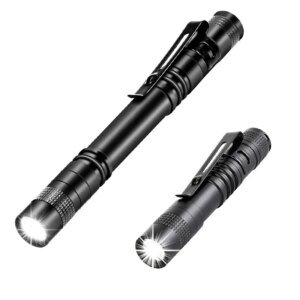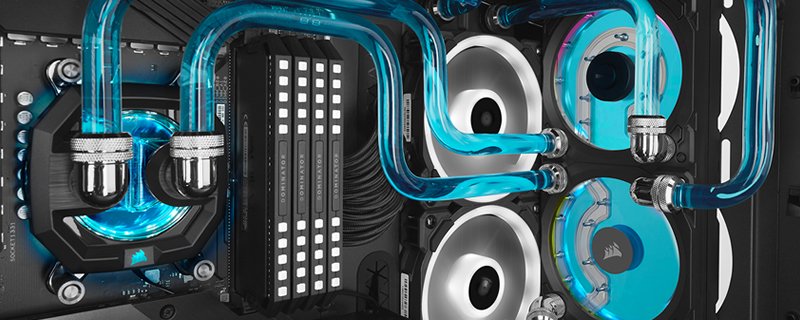-
Buy now
Smart Airtag Card GPS Tracker Works With Apple Find My Anti-Lost Locator For Passport Wallet Waterproof IPX7 3-Year Battery Life
Trackers €61.00Rated 0 out of 5 -
Buy now
IceManCooler Two Dual Channels Memory Copper Water Block For Computer Water Cooling RAM Cooler ,Included Thermal Pad
RAM Water Cooling€68.00Original price was: €68.00.€65.00Current price is: €65.00.Rated 0 out of 5 -
Buy now
Ultra-Portable GoPro Alternative: 12MP Underwater Camera with HyperSmooth Anti-Shock & 10M Waterproof
GoPro€51.00Original price was: €51.00.€28.00Current price is: €28.00.Rated 0 out of 5 -
Buy now
Mini Portable LED Pen Light Pocket Ultra Bright High Lumens Handheld Flashlight Linterna Torch For Camping Outdoor Emergency
Flash Lights€11.00Original price was: €11.00.€8.00Current price is: €8.00.Rated 0 out of 5 -
Buy now
Wireless Gaming Mouse 2.4G Rechargeable Bluetooth Mouse For Laptop RGB Backlight E-Sports Mechanical Mouse For PC Computer Gamer
Mouse €16.00Rated 0 out of 5 -
Buy now
FREEZEMOD Male-Male 360 Degree Rotary G1/4 ”Thread Dual External Hexagonal Fixed Adapter Double Male Fitting BXZDS-C14
Cooling Parts€10.00Original price was: €10.00.€9.00Current price is: €9.00.Rated 0 out of 5 -
Buy now
Syscooling white PC watercooling kit for intel and AMD CPU waterblock 360 radiator RGB lights pump
CPU Coolers €380.00Rated 0 out of 5 -
Buy now
2025 New For Xiaomi GPS Children’s Smart Watch 4G Track Video Call Camera SOS Waterproof Display Location LBS Tracker SmartWatch
Kids Watches€83.00Original price was: €83.00.€44.00Current price is: €44.00.Rated 0 out of 5 -
Buy now
TISHRIC Water Cooler 120/240/360mm CPU Cooling Fan PC Computer Radiator RGB Heatsink For INTEL LGA 1151/1700/2011/AM3+/AM4 AMD
Liquid Cooling €73.00 – €123.00Price range: €73.00 through €123.00Rated 0 out of 5 -
Buy now
New L106-1 MAX GPS 8K Camera With LCD Screen Remote Drone Brushless Motor 2.4Ghz 5G Wifi Connected Portable Mini RC Quadcopter
Drones€187.00Original price was: €187.00.€96.00Current price is: €96.00.Rated 0 out of 5 -
Buy now
Original XIAOMI J18 Headset Wireless Earphones Bluetooth Headphones True For Stereo Sport Game TWS Earbuds In Ear With Mic Touch
Xiaomi Headphones €13.00Rated 0 out of 5 -
Buy now
Xiaomi REDMI Wireless Earphone Noise Reducting Bluetooth Earbuds HiFi Stereo In-Ear Headset Subwoofer Headphones Handsfree Mic
Xiaomi Headphones €17.00Rated 0 out of 5 -
Buy now
ALIEN 500mw RGB Laser Beam Line Scanner Projector DJ Disco Stage Lighting Effect Dance Party Wedding Holiday Bar Club DMX Lights
Laser Pointer and Light €83.00 – €89.00Price range: €83.00 through €89.00Rated 0 out of 5 -
Buy now
Essager 4 in 1 Type C to USB Hub 4 Ports USB3.2 Gen 2 Portable High Speed Splitter Adapter For Macbook Pro Computer Accessories
USB Hubs €27.00Rated 0 out of 5
- Anti Stress Gadgets
- Drones
- Charging Station
- CPU Coolers
- Flash Lights
- Hard Disk
- Huawei
- Keyboard Gaming
- Laser Pointer and Light
- LED Signs
- Ram Coolers
- Retro Gaming
- NFC
- Mobile DVD Players
- Mouse
- Mouse Pad
- Mini Pc's
- Portable Monitors
- Projectors
- Pencil for Apple
- Pencil for Lenovo-Surface-Samsung
- Photography
- Secondary PC Screen
- Smart Home
- Solar
- Speakers
- VGA Cards
- Watches
- Xiaomi
- USB Hubs
- Trackers
- Anti Stress Gadgets
- Drones
- Charging Station
- CPU Coolers
- Flash Lights
- Hard Disk
- Huawei
- Keyboard Gaming
- Laser Pointer and Light
- LED Signs
- Ram Coolers
- Retro Gaming
- NFC
- Mobile DVD Players
- Mouse
- Mouse Pad
- Mini Pc's
- Portable Monitors
- Projectors
- Pencil for Apple
- Pencil for Lenovo-Surface-Samsung
- Photography
- Secondary PC Screen
- Smart Home
- Solar
- Speakers
- VGA Cards
- Watches
- Xiaomi
- USB Hubs
- Trackers
- Anti Stress Gadgets
- Drones
- Charging Station
- CPU Coolers
- Flash Lights
- Hard Disk
- Huawei
- Keyboard Gaming
- Laser Pointer and Light
- LED Signs
- Ram Coolers
- Retro Gaming
- NFC
- Mobile DVD Players
- Mouse
- Mouse Pad
- Mini Pc's
- Portable Monitors
- Projectors
- Pencil for Apple
- Pencil for Lenovo-Surface-Samsung
- Photography
- Secondary PC Screen
- Smart Home
- Solar
- Speakers
- VGA Cards
- Watches
- Xiaomi
- USB Hubs
- Trackers
Shopping Cart




















